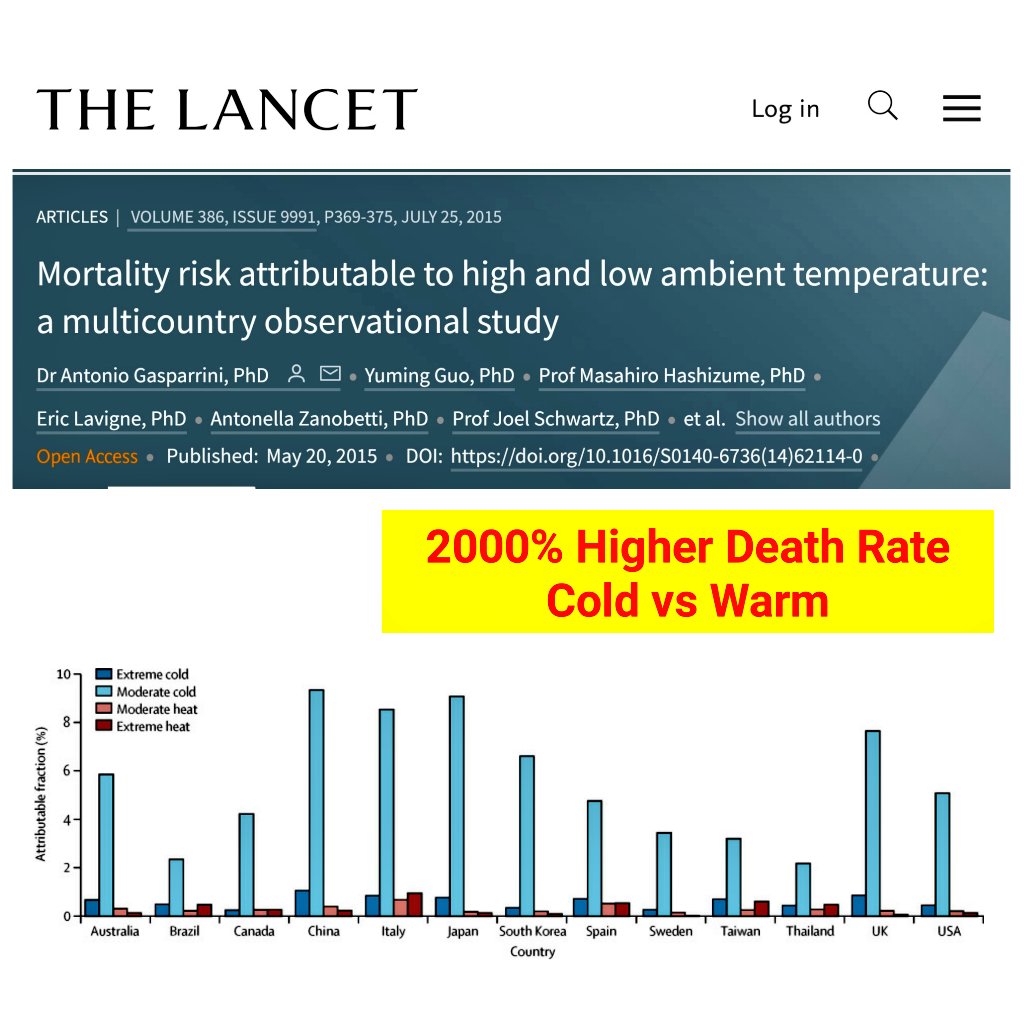3 New Studies Conclude 21st Century Cold Temps Led To 7-10 Times More Deaths Than Warm Temps
NoTricksZone: Not here to worship what i… / by Kenneth Richard / 5d
Scientists have calculated the years of life lost (YLL) attributed to exposure to “non-optimum” temperatures. It turns out that during the 2000s – supposedly the warmest years on record – people were still far more likely to die from exposure to cold temperatures than warm temperatures.
The country with the largest human population has recently experienced “the coldest records since the monitoring service first operated,” the “lowest [air temperature] in 44 years,” and “the coldest temperature in the past 59 years” during prolonged cold waves that directly led to excess mortality (Ho et al., 2020).
Early or excess deaths across China attributable to exposure to cold temperatures is far more common than early or excess deaths attributable to exposure to warm temperatures. This is not just true for China; it’s consistent with global trends.
“Gasparrini et al. (2015) studied 74,225,200 deaths in various periods across 384 worldwide locations between 1985 and 2012, and found that 7.29% of deaths were attributable to cold, while there were only 0.42% attributable to heat.”
Image Source: Ho et al., 2020
Three new studies calculate the attributable contribution of cold versus warm temperatures to early or excess deaths across China during the 2000s. Scientists found non-optimum temperatures led to 1.02 years of life lost (YLL) per two independent studies, whereas a third study suggests the non-optimum temperature YLL is 1.51 years.
All three studies reach the same conclusion: exposure to cold temperatures led to 0.89, 0.98, and 1.07 years of life lost out of 1.02, 1.02, and 1.51 years lost to non-optimum temperatures, respectively.
In other words, people were about 7 to 10 times more likely to die from exposure to cold temperatures during the supposedly warmest years on record.
- Ai et al., 2021
“In general, 6.90% (95% confidence interval (CI): 4.62%, 9.18%) of YLLs [years of life lost] could be attributed to non-optimum temperatures at the national level, with differences across different regions, ranging from 5.36% (95% CI: −3.36%, 6.89%) in east region to 9.09% (95% CI: −5.55%, 23.73%) in northwest region. For each deceased person, we estimated that non-optimum temperature could cause a national-averaged 1.02 years (95% CI: 0.68, 1.36) of life loss, with a significantly higher effect due to cold exposure (0.89, 95% CI: 0.59, 1.19) than that of hot exposure (0.13, 95% CI: 0.09, 0.16).”
Image Source: Ai et al., 2021
- Liu et al., 2021
“Although numerous studies have investigated premature deaths attributable to temperature, effects of temperature on years of life lost (YLL) remain unclear. We estimated the relationship between temperatures and YLL, and quantified the YLL per death caused by temperature in China. We collected daily meteorological and mortality data, and calculated the daily YLL values for 364 locations (2013–2017 in Yunnan, Guangdong, Hunan, Zhejiang, and Jilin provinces, and 2006–2011 in other locations) in China. A time-series design with a distributed lag nonlinear model was first employed to estimate the location-specific associations between temperature and YLL rates (YLL/100,000 population), and a multivariate meta-analysis model was used to pool location-specific associations. Then, YLL per death caused by temperatures was calculated. The temperature and YLL rates consistently showed U-shaped associations. A mean of 1.02 (95% confidence interval: 0.67, 1.37) YLL per death was attributable to temperature. Cold temperature caused 0.98 YLL per death with most from moderate cold (0.84).”
- Hu et al., 2021
“Life loss of cardiovascular diseases per death attributable to ambient temperature: A national time series analysis based on 364 locations in China … This study examines the health effects of non-optimal temperature, and quantify temperature-related life loss per death. Life loss per CVD death attributable to non-optimal temperatures was 1.51. Most [1.07 (95% eCI: 1.00, 1.15) years] of temperature-related life loss of CVD was attributed to moderate cold.”
#
Flashback:
When you include a few other countries, cold related deaths are 2000% higher than heat related deaths. pic.twitter.com/iLA83ee5l7
— 𝔻𝕒𝕨𝕟𝕋𝕁𝟡𝟘™ 🇵🇭💖🇨🇦 Climate of Dawn (@DawnTJ90) June 23, 2022




